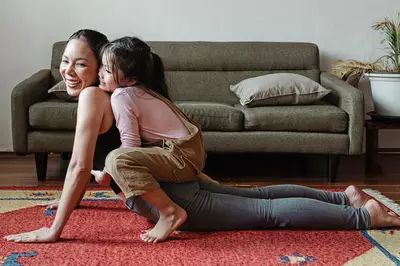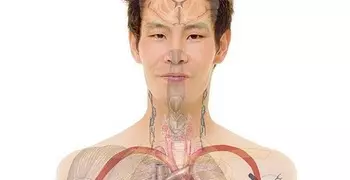Finding Strength and Calm

Mind-body practices are a collection of techniques used to strengthen the connection between your emotional, mental, and physical wellbeing. Living with a cancer or rare disease diagnosis can be stressful. Dealing with physical illness, treatment, and the uncertainty of monitoring a condition overtime is not just a physical experience; it can impact mental and emotional wellbeing significantly. Mind-body practice can help a person process their experiences and feel whole despite either a serious diagnosis or a full time job of caregiving for someone with a diagnosis.
Curious about what makes these practices so powerful? Let’s explore how they strengthen the mind-body connection and support brain function.
Strengthen mind-body connection
Mind-body practices use techniques that strengthen the connection between the emotional, mental, and physical aspects of ourselves.
Build neuroplasticity with mind-body practices
The brain is a dynamic organ that changes throughout the lifespan and is able to reorganize itself by creating new neurological connections in response to your experiences, behaviors, thoughts, emotions, disease, and damage. This process of creating new neurological pathways is called neuroplasticity. One example of this process is a person who lost the ability to move an arm due to a stroke but was able to redevelop this function as the brain built new neurological connections as they practiced in rehab. Mind-body skills are built on the understanding of neuroplasticity. The more you practice, the more you build neurological pathways between the body and mind, and create a stronger connection. The practice is actually changing the structure and function of your brain. Because neuroplasticity is driven by repetition, consistent practice is key to making these skills more effective and automatic over time.
Mind-Body skills require practice
Mind-body practices help you develop skills that can be strengthened over time. The more you use them to respond calmly to stressful situations, the easier it is for your body and mind to remain in a calm and focused state. For example, if you are someone who becomes angry and aggressive when you are cut off in traffic, you can use mind-body practices to train yourself to respond calmly and with more patience the next time you are cut off.
This consistent practice not only shapes your behavior but also activates physiological changes, specifically, it helps trigger the body’s relaxation response.
Induce the relaxation response
Mind-body practices induce the relaxation response, which counteracts stress and the ‘fight or flight’ response throughout the body. In essence, the relaxation response turns off the stress response. This is important because the stress response releases cortisol, adrenaline, and norepinephrine, which increase your blood pressure, heart rate, and respiratory rate. Frequent and prolonged activation of stress leads to chronic disease and increases your risk of death. It also reduces the function of your immune system over time.
The relaxation response directly addresses stress by switching the body’s response from the sympathetic nervous system to the parasympathetic nervous system. What this means is that the production of stress hormones drops, your blood pressure lowers, and your breathing becomes deeper and slower. When the parasympathetic nervous system is functioning properly, individuals often find that their muscles relax, they can digest food better, and they can think more clearly and broadly.
Examples of mind-body practices
- Meditation
- Mindfulness
- Breathwork
- Guided Imagery
- Progressive Muscle Relaxation
- Energy Therapy
- Massage Therapy
- Yoga
- Tai Chi
- Qigong
Incorporate mind-body practices into your life
Mind-body practices have the greatest impact when practiced routinely so you re-train your brain. This can increase your capacity to deal with stressful events and enhance your overall wellbeing.
Two ways to incorporate mind-body practices
Add as a part of your Daily Routine
When you practice mind-body skills routinely, you support ongoing symptom management and promote general wellbeing. When you incorporate these practices into daily routines, you build the ability to engage the relaxation response more readily in times of overstimulation and crisis. The body and mind learn to function in a calmer state.
You can use all of the mind-body practices discussed on this site for ongoing self-care and wellbeing.
Use as a Just-In-Time Intervention
Are you anxious about scans or a procedure? Maybe you are seeing your friends after being in the hospital for a long time. Both of these situations can make you feel anxious, restless, and nervous. Mind-body practices can decrease those anxious feelings and help you feel calmer and more able to manage the situation.
Just-in-time interventions include:
- Breathwork
- Guided Imagery
- Progressive Muscle Relaxation (PMR)
Types of mind-body practices
There are many types of mind-body practices. Here are a few examples you can begin trying at home.
Breathwork
Breathwork uses focused attention on and/or control of the breath to promote relaxation. Typically breathwork is practiced in repetition and often used in conjunction with another mind-body practice, such as yoga or meditation. It offers a simple technique to switch the nervous system from an alert and active state to a relaxed and calm state. Breathwork can be widely applied to decrease pain and anxiety, promote sleep, provide support during procedures, and ease anxiety with taking medications.
Clinical Hypnosis
Clinical hypnosis guides you through an experience of mental self-exploration. It is often referred to as self-hypnosis because the individual experiencing the hypnosis determines how deep into the hypnotic state they want to go. Clinical hypnosis often includes permissive language, imagination, and guided relaxation techniques within the same encounter. Clinical hypnosis promotes a deep state of relaxation and focused attention to achieve specific goals and outcomes. These include behavioral development, smoking cessation, weight management, sleep, anxiety, fear, and even procedural anesthesia.
Guided Imagery
Imagery is a form of focused relaxation that elicits the five senses to create a calming mind-body experience. Guided imagery allows individuals to reflect on aspects of previous experiences to induce relaxation and positive response. Often a guided imagery session will use calming music or sounds of nature to enhance the experience. Guided imagery invites the mind and body to visualize a desired outcome and can help with fear, anxiety, and depressed mood. It can also enhance performance.
Meditation
Meditation is the practice of focusing attention on an object, such as the breath, sounds, a mantra or whatever sensations and thoughts are arising in the moment. It can lead to a heightened state of concentration and awareness and calm. There are many variations of meditation. The most common forms are sedentary and silent but there is growing interest in moving meditation, such as walking meditation, yoga, and Tai Chi. Meditation sometimes incorporates breathwork or repetition of a mantra. There is a substantial body of research to support the use of meditation for a variety of ailments including insomnia, anxiety, chronic pain, hypertension and metabolic syndrome. It has also been shown to improve mental and physical performance, reduce stress, and enhance overall wellbeing.
Progressive Muscle Relaxation (PMR)
PMR involves tensing and relaxing specific muscle groups to down-regulate the nervous system and induce the relaxation response. Stress and anxiety are often held in the body, which leads to muscle tension and discomfort. Through PMR an individual can learn to control their response to stressors. PMR is particularly beneficial in acutely stressful situations, such as performance anxiety or an argument. Many find PMR useful for insomnia, chronic stress management, and anxiety.
Qigong & Tai Chi
Qigong and Tai Chi are meditative movement practices that strengthen the mind-body connection and improve mobility, flexibility, and balance. Tai Chi and Qigong incorporate meditation and breathwork with slow, low-impact, continuous movement. Practicing these exercises has been shown to improve cardiovascular circulation, decrease arthritis and joint pain, improve high blood pressure, and lower cholesterol levels. Tai Chi, specifically, improves balance and prevents falls in the elderly population.
Yoga
Yoga can include physical postures, breathwork, and meditations that promote healing. There are various types of yoga practices but the most popular include: Ashtanga vinyasa, yin, and Iyengar, as well as various types of hot yoga. What differentiates the types of yoga are the focus on breath (prana), postures (asana), hand gestures (mudras), and pace of class. There is a strong body of evidence that supports the use of yoga for physical and psychological conditions. Specifically, yoga may alleviate the impact of anxiety, depression, asthma, musculoskeletal pain, diabetes, and cardiovascular disease.
Time to Get Started
Ready to begin? Here are few simple, guided practices to help you start experiencing the benefits of mind-body practices.
Listen to a guided meditation
If you can, find a place where you can sit without interruptions for 10 minutes. Begin by adopting a comfortable posture that is relaxed, but alert. Choose one of the meditations below to practice. Remember, as you try these meditations you can modify anything that does not feel supportive to you-you are in control.
These meditations are from the Mindfulness at Work online course offered by the Center for Spirituality and Healing.
- 5 minute grounding meditation with a male voice
- 7-minute awareness of body and breath meditation with a female voice
Breathwork (Breathing Deeply)
Try imagining a spot just below your navel. Breathe into that spot and fill your abdomen with air. Let the air fill you from the abdomen up, then let it out, like deflating a balloon. With every long, slow breath out, you will feel more relaxed.
- Sit up straight.
- Inhale through your nose with your mouth closed.
- Exhale through your mouth with your lips pursed (as if you were whistling or kissing).
- Make your exhalation twice as long as your inhalation (for example, inhale for two seconds, exhale for four). Use your abdomen when you breathe, consciously pushing your belly out. Try putting one hand over your stomach, to see how it rises and falls.
2-Minute Relaxation
- Focus your attention on your breathing. Take a few deep breaths, exhaling slowly.
- Mentally scan your body. Notice areas that feel tense or cramped. Quietly loosen them. Let go of as much tension as you can.
- Rotate your head in a smooth, circular motion once or twice (avoid any movements that cause pain).
- Roll your shoulders forward and backward several times. Let all of your muscles completely relax.
- Recall a pleasant thought, event, or place.
- Take deep breaths and exhale slowly.
4-7-8 Breathing
- Prepare yourself in a comfortable position.
- Simply bring your awareness to your breath.
- Allow yourself a few natural breaths.
- When you are ready, empty your lungs completely.
- On your next inhale, breathe in quietly through the nose for 4 seconds.
- Hold the breath for a count of 7 seconds.
- Exhale forcefully through the mouth, pursing the lips and making a “whoosh” sound, for 8 seconds.
- Repeat the cycle 6 times (about 2 minutes)
Mind and body exercises can be beneficial for anyone to practice, including those with chronic illness or a cancer diagnosis. How do you plan to try incorporating mindfulness into your life?



